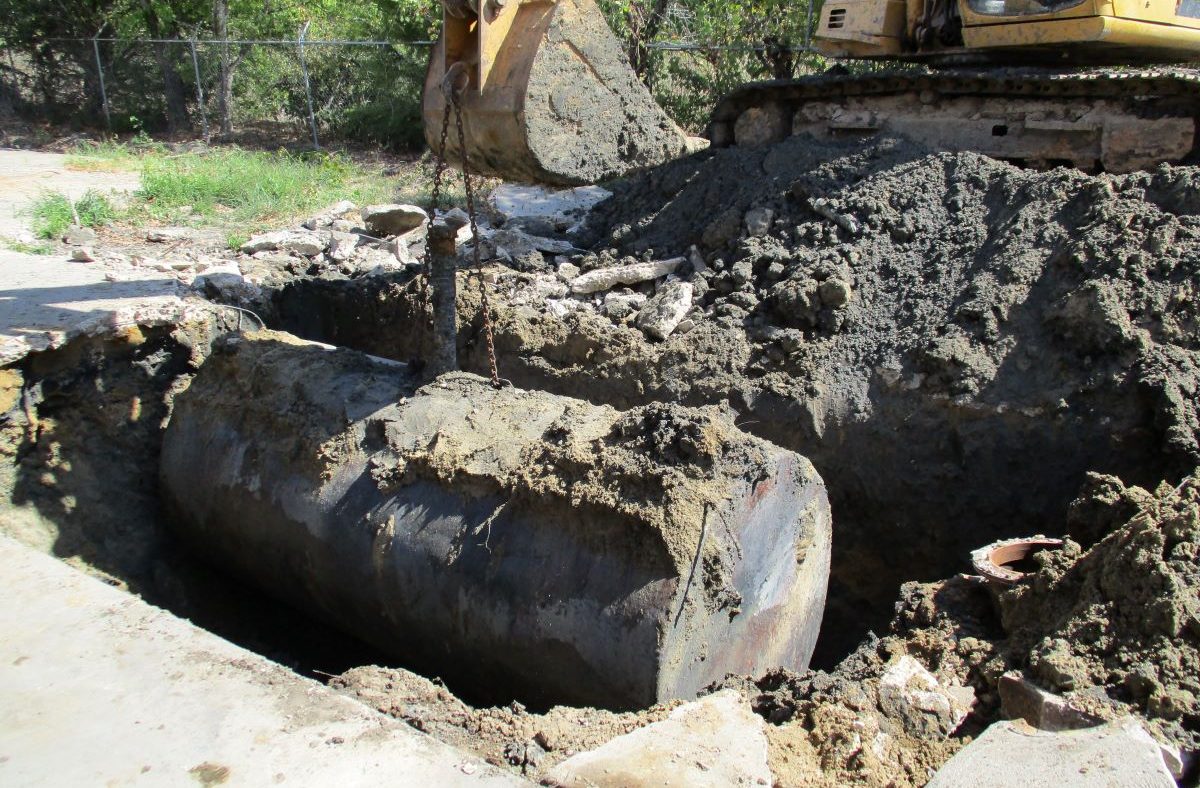History of Environmental Protection Agency Underground Storage Tank Regulations
As of March 2018, The Environmental Protection Agency (EPA) reported 540,979 confirmed releases associated with underground storage tank (UST) systems. When USTs leak, the contents (petroleum and hazardous chemicals) can contaminate the surrounding soil and groundwater (a drinking water source). In order to protect human health and the environment, a federal program was developed to regulate USTs containing petroleum and hazardous chemicals. The EPA established standard operating procedures and technical standards, authorized the EPA to respond/remediate UST releases, established financial responsibility (to fund UST release remediation), and established a leaking underground storage tank (LUST) fund (another remedial fund).
In 2015, the EPA established updated UST regulations to support UST regulations from the 1980s. The 2015 update focused on operation and maintenance (O&M) requirements, requirements for secondary containment, and operator training. In addition, the 2015 UST regulations addressed biofuel blend storage, removed regulatory deferrals for specific USTs (i.e. emergency generator tanks, field constructed tanks, and airport hydrant systems), updated codes of practice, and made editorial/technical corrections.
Upcoming October 13, 2018 Deadline
The rolling implementation schedule for the 2015 UST regulations’ final deadline for compliance is in the Fall of 2018. The following regulations have a compliance deadline of October 13, 2018:
1. Operator Training Requirement:
WHAT?
UST operators must designate and train Class A, B, and C operators and maintain a record of their training.
Class A: Must be trained to make knowledgeable decisions related to UST compliance and ensure that the appropriate individuals are completing proper O&M and recordkeeping requirements.
Class B: Must be trained to implement applicable UST regulations related to typical UST systems (or the UST system at their facility).
Class C: Must be trained to take appropriate actions in response to UST spill emergencies or alarms.
WHY?
This regulation change will ensure that UST operators are properly trained to identify and prevent UST releases.
2. O&M Requirements:
WHAT?
Walkthrough Inspections: Every 30-days an inspection of the spill prevention equipment, release detection equipment, containment sumps, and handheld release detection equipment must be completed. Records for the most recent year’s inspections must be maintained.
Overfill Prevention Inspections: Every 3-years an inspection of the overfill prevention equipment is required. Records must be maintained for the last 3-years.
Spill Prevention & Containment Sump Testing: Every 3-years spill and containment sump equipment must be tested OR double walled spill prevention and sumps are monitored at least as frequently as the walkthrough inspections. Records for either option must be maintained for the last 3-years.
Release Detection Testing: Annually release detection equipment must be tested. Records must be maintained for the last 3-years.
WHY?
The updated O&M requirements ensure that UST owners are regularly inspecting and testing their equipment to identify releases before they occur or as soon as possible.
3. Previously Deferred UST Systems
WHAT?
Previously deferred UST systems (field-constructed tanks, airport hydrant systems, and wastewater treatment systems, and some emergency generators) are now required to perform release detection.
WHY?
To ensure that the previously deferred UST systems are utilizing proper release detection.
4. Vapor/Groundwater Monitoring
WHAT?
Records of site assessment (vapor/groundwater monitoring results) must be maintained for as long as vapor/groundwater monitoring methods are utilized as release detection.
WHY?
To ensure that records can be maintained/reviewed for release detection.
5. State Program Approvals (SPA)
WHAT?
States operating with SPA must submit a revised package to address the 2015 regulatory changes.
WHY?
To ensure that states will update their programs and provide consistency between state and federal regulations.
Why is it Important to UST Insurers?
The most commonly utilized financial assurance mechanisms used by UST owners to comply with financial responsibility requirements are state cleanup funds or UST insurance.
According to the EPA, one of the most common sources of groundwater contamination is leaking gasoline USTs. Should a release occur from a UST at an insured’s site, remediating the soil and/or groundwater contamination can result in a significant cost to insurance carriers.
Ensuring that UST systems are compliant with the 2015 UST regulations will increase the UST owner/operator’s ability to identify releases before or as soon as they occur, typically resulting in decreased remedial costs. Additionally, many states offer State Funded Cleanup for UST releases; however, compliance with UST regulations is a typical requirement for those programs.
How Can VERTEX Help?
VERTEX has been relied on by insurance carriers to successfully support claim and underwriting assignments involving UST systems nationwide. Our services are wide ranging — including cause and origin investigations, underwriting support, claim invoice review, extent-of-impact evaluations, claim monitoring and management, and litigation and technical support.
If you would like to discuss any of the upcoming regulatory changes, learn more about State-Funded Cleanup Programs or speak with an Environmental Expert, call 888.298.5162 or submit an inquiry.
Learn more about VERTEX’s Environmental Consulting and Forensic Consulting Services.
Author
Kirstin Birdsall
Project Manager



